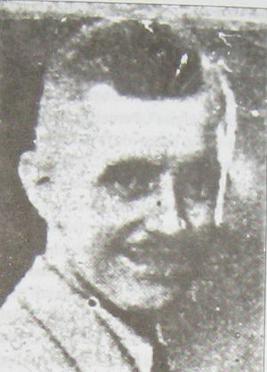Albert Balink facts for kids
Quick facts for kids
Albert Balink
|
|
|---|---|

Balink in the 1930s
|
|
| Born | 3 August 1906 's-Hertogenbosch, Netherlands
|
| Died | 8 February 1976 (aged 69) Pensacola, Florida, United States
|
| Nationality | Dutch |
| Occupation | Journalist, filmmaker |
| Years active | 1920s–1950s |
|
Notable work
|
|
Albert Balink (born August 3, 1906 – died February 8, 1976) was a Dutch journalist and filmmaker. He played an important role in the early days of Indonesian movies. Born in the Netherlands, he started his career writing about films in the Dutch East Indies. He taught himself how to make movies. In the mid-1930s, he made a documentary and two feature films. Later, he moved to the United States and continued his work as a journalist.
Contents
Albert Balink's Story
Albert Balink was born in 's-Hertogenbosch, Netherlands. In the 1920s and early 1930s, he worked as a reporter. He wrote for newspapers like De Locomotief in Semarang and the Soematra Post in Medan. Both cities were in the Dutch East Indies. He wrote a lot about movies during this time.
Making Films in Indonesia
In 1934, Balink started a film company called Java Pacific Film. He partnered with the Wong brothers. Their office was in an old tapioca flour factory in Bandung. Balink had never made a film before. He learned everything about filmmaking by reading books.
The company's first movie was a documentary called De Merapi Dreigt (Mount Merapi Looms). It came out in 1934. This film was special because it was advertised as the first documentary with sound in the Dutch East Indies. Critics really liked it.
Balink was most interested in making feature films. These are the longer story movies we usually watch. He wanted to make movies for a more educated audience. This was different from other filmmakers like The Teng Chun. Those films were often based on Chinese stories and made for a different group of people.
Pareh: A Big Project
Balink's studio then made Pareh (Rice) in 1936. This was an ethnographic film. It showed the culture and life of a certain group of people. Balink brought a director named Mannus Franken to the country. He wanted to make sure the film was very good.
Balink and Franken worked together on Pareh. Balink helped write the story and found money for the film. He also searched all over the country to find the right actors. Even though it was a big effort, the film did not make money. It cost a lot to make, and the company went bankrupt. However, people in the Netherlands liked the movie.
Terang Boelan: A Huge Hit
After this, Balink found new money to start another company. It was called the Dutch Indies Film Syndicate (ANIF). In 1936, they made their first newsreel. This was a short film showing current events. It featured the Gambir Market and celebrations at the Governor-General's palace.
In 1937, Balink directed Terang Boelan (Full Moon). This is known as the first full-length Indonesian film in the Malay language. The story was about a young couple whose parents did not approve of their relationship. A reporter named Saeroen wrote the story.
Terang Boelan was a huge success! It made more money than any other Indonesian film until 1953. Even with this success, the people who funded Balink's studio did not like his focus on feature films. So, he left Indonesia and moved to the United States. He tried to become a director in Hollywood, but it didn't work out.
Later, in 1991, a film expert named Karl G. Heider said that Pareh and Terang Boelan were the two most important films from the Dutch East Indies in the 1930s.
Life in the United States
In March 1938, Balink moved to the United States. He became an American citizen. He worked as a writer for a Dutch newspaper called de Volkskrant. In 1940, he lived in Queens, New York, with his wife, Lydia. Lydia was his secretary.
In 1948, he wrote a book about the Caribbean called My Paradise is Hell. In the 1950s, he started a magazine called The Knickerbocker. This magazine was for Dutch Americans. It helped a Dutch baseball player named Han Urbanus train with the New York Giants. This training helped Urbanus improve baseball in the Netherlands.
Also in the 1950s, Balink led a committee for a journalism award. In 1953, he helped organize relief efforts for the North Sea flood of 1953. This flood caused a lot of damage in the Netherlands. Balink also enjoyed playing tennis as a hobby.
Albert Balink passed away in Pensacola, Florida, on February 8, 1976.
Films by Albert Balink
- De Merapi Dreigt (Mount Merapi Looms; 1934)
- Pareh (Rice; 1936)
- Terang Boelan (Full Moon; 1937)

